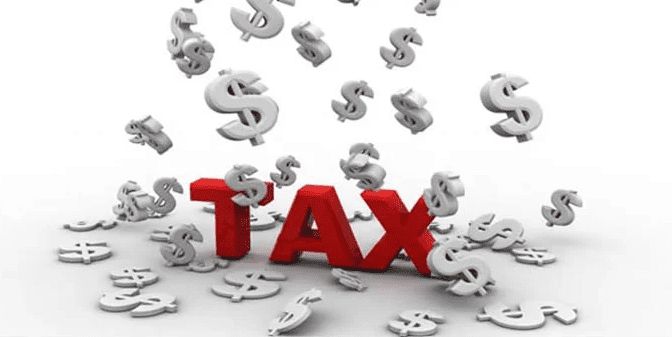With tax time just around the corner this is a must read: Discover ‘legal’ ways to slash your tax bill, all while supercharging your property portfolio.
Let’s start by considering the average hardworking 22-year-old couple each earning $85,000 annually. Over their working lives, they’ll end up paying a staggering $1.5 Million in taxes. That’s right, they’ll spend at least one full day of their work week just paying the tax man.
Here’s the kicker: the average mortgage in Australia is around $599,992. So, not only will this couple attempt to pay off their own home, but they’ll also have to cough up the equivalent of 2.5 additional mortgages to the tax office.
But wait, there’s good news. While taxes are indeed contributions towards our beautiful country and its great infrastructure, there are legal ways to significantly reduce your tax bill. And here’s the exciting part—the government actively endorses these strategies by calling them “tax incentives.”
Discover the secrets to maximise your tax refund and supercharge your financial future. It’s time to take control and maximize your hard-earned money!
Top 5 Tips for Maximizing Tax Benefits:
1. Take Advantage of Negative Gearing
Negative gearing is a tax incentive that allows you to claim a tax benefit on a property. By owning an investment property, you can deduct expenses such as mortgage interest, property expenses, and depreciation from your taxable income, potentially resulting in a significant reduction in your tax bill.
What is negative gearing?
A huge liability for many governments is the cost of health care and the aged pension, and the powers that be realize that funding the pension for every Australian isn’t realistic. So, they want you to be financially independent and are prepared to assist you in getting there. They do this in the form of something called ‘negative gearing’, which is a tax incentive the ATO makes available to taxpayers who invest within Australia.
Why is this important?
Most people don’t realize they can own a great property in a major capital city and have little to no ongoing costs to hold that property in the long term, all while putting their hard-earned tax money to work. This allows you to add a second, third and subsequent properties to your portfolio without living on canned tuna and baked beans.
Working Example
Let’s say you have a property (just one) and you earn $100,000, you would typically pay around $23,000 in taxes. But with this strategy, you can receive a tax credit of around $10,000 for that property, which is like getting 40% of the original tax back in your pocket. And if you own multiple properties, the tax benefits increase even more, with over 80% of your tax bill potentially being returned to you.
That means you’ll be receiving a significant amount of your tax bill as a credit, and at the same time, you’ll have two investment properties working for you, bringing you closer to financial freedom.
2. Understand Deductions: Amortisation and Depreciation
Amortisation and depreciation are essential concepts when it comes to tax benefits.
Amortisation allows you to deduct the cost of constructing an investment property over a 40-year period, while depreciation enables you to depreciate the cost of fixtures and fittings over shorter periods. That means the cost of taps, lights, carpets, curtains – anything that is bolted down but not part of the structure.
To put it simply, let’s say you’re in the 39 cent tax bracket, and the cost of a new build is $400,000 as a round number. Over that 40-year period, because of depreciation, the government is giving you $148,000 back in the tax you pay on a new property that you don’t get on an established property.
Educating yourself on how these deductions work is crucial for maximising their benefits.
Working Example
You need to borrow money to purchase an investment property. Assuming that interest was $20,000 per year.
| Investment Property negatively geared | ‘New build’ Investment Property negatively geared + depreciation and amortisation | |
| Rent | $30,000 | $20,000 30,000 |
| Property expenses | ($5000) | ($5000) |
| Interest Costs | ($10,000) 20,000 | ($10,000) 20,000 |
| Amortisation & Depreciation | ($12,000) | |
| Gross Profit | $5,000 | ($7,000) – this is now a tax deduction |
| Tax Payable | $1,500 (assumes 30% tax) | ($2,100) – this is now a tax REFUND |
| Net Cashflow | $3,500 | $5,600 |
| Because a newly built property grants us a much higher amount of depreciation, you get a higher amount of tax back in our pocket. |
We used a flat tax bracket in the above examples, but in reality, the tax benefits become even greater when adding your personal income to that of your property and considering the impact of depreciation on your variable tax bracket.
3. Invest in Newly Built Properties
The government provides greater tax benefits for newly built properties compared to older ones. By investing in new properties, you can take advantage of higher depreciation allowances, allowing you to maximize your tax deductions. If you buy smart, you can receive up to $180,000 back in tax over the life of one new investment property.
4. Tax Variation Form
The tax variation form, also known as a withholding variation form, is important for individuals or property owners to adjust the amount of tax withheld from their regular income or rental income throughout the year. By completing this form, you can receive the tax benefit immediately rather than waiting until the end of the financial year to receive a tax refund, therefore putting extra money in your bank account every month.
5. Consider Your Tax Bracket
The impact of depreciation on your variable tax bracket can significantly increase your tax benefits. By combining your personal income with the income generated from your property, you may find yourself in a higher tax bracket, resulting in greater tax deductions and more money back in your pocket.
Tax laws and regulations can be complex, so it’s wise to consult with a tax professional who specializes in property investments. They can provide personalized guidance based on your financial situation and help you navigate the intricacies of maximizing tax benefits while building your wealth.
Remember, these tips should be implemented within the framework of legal tax strategies. To better understand how you can use this to your advantage, please don’t hesitate to reach out. We are here to help.









